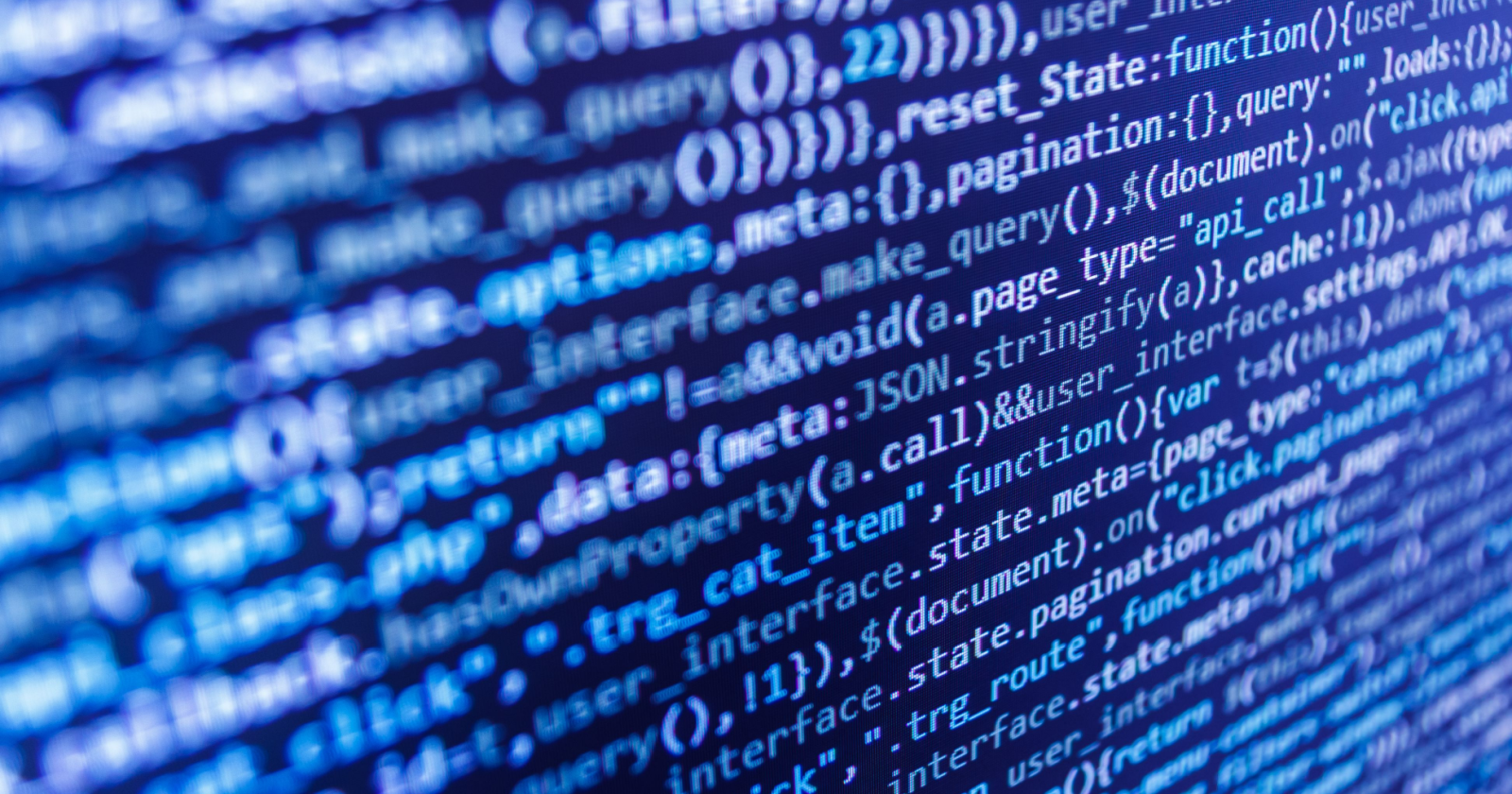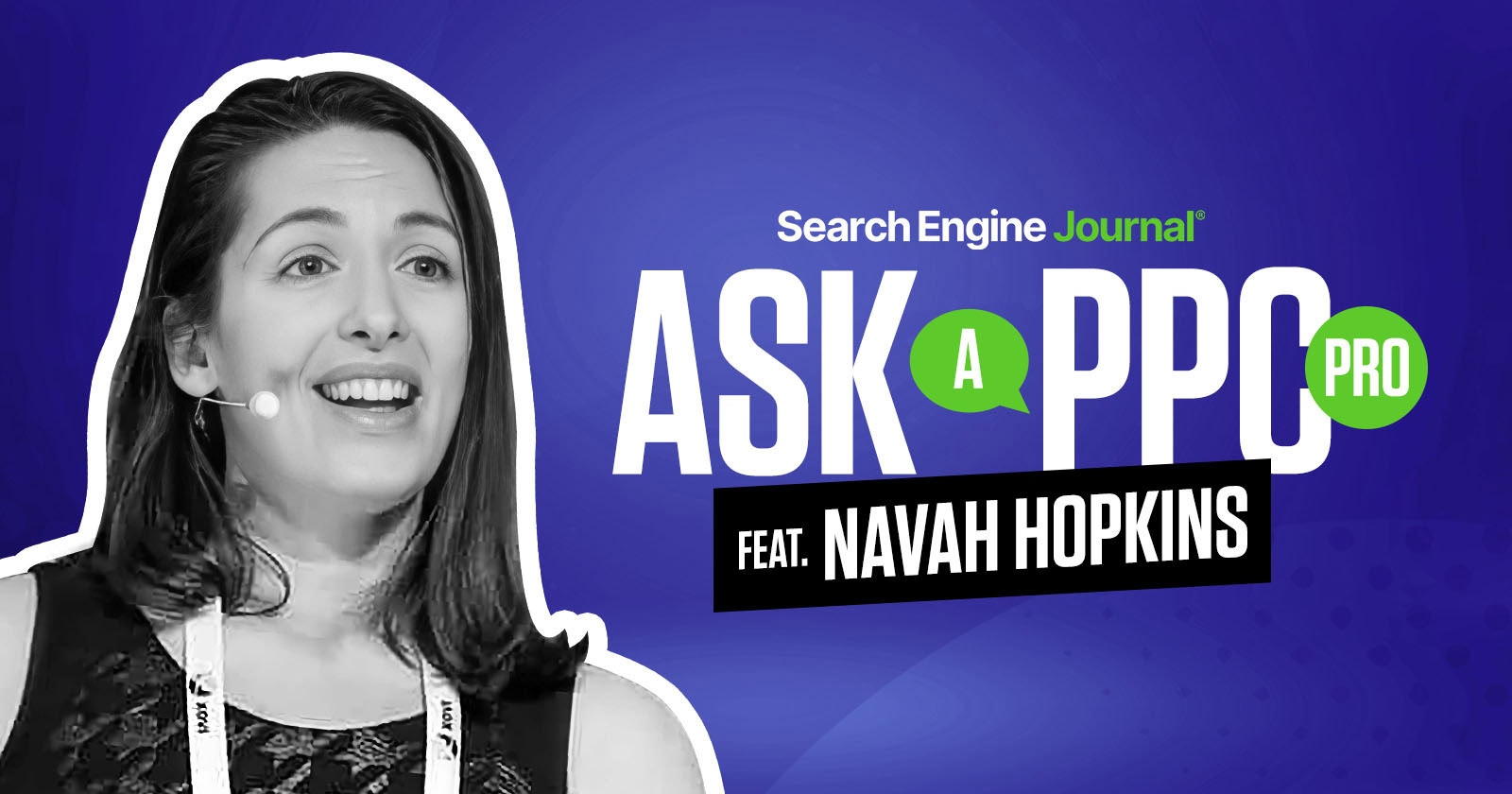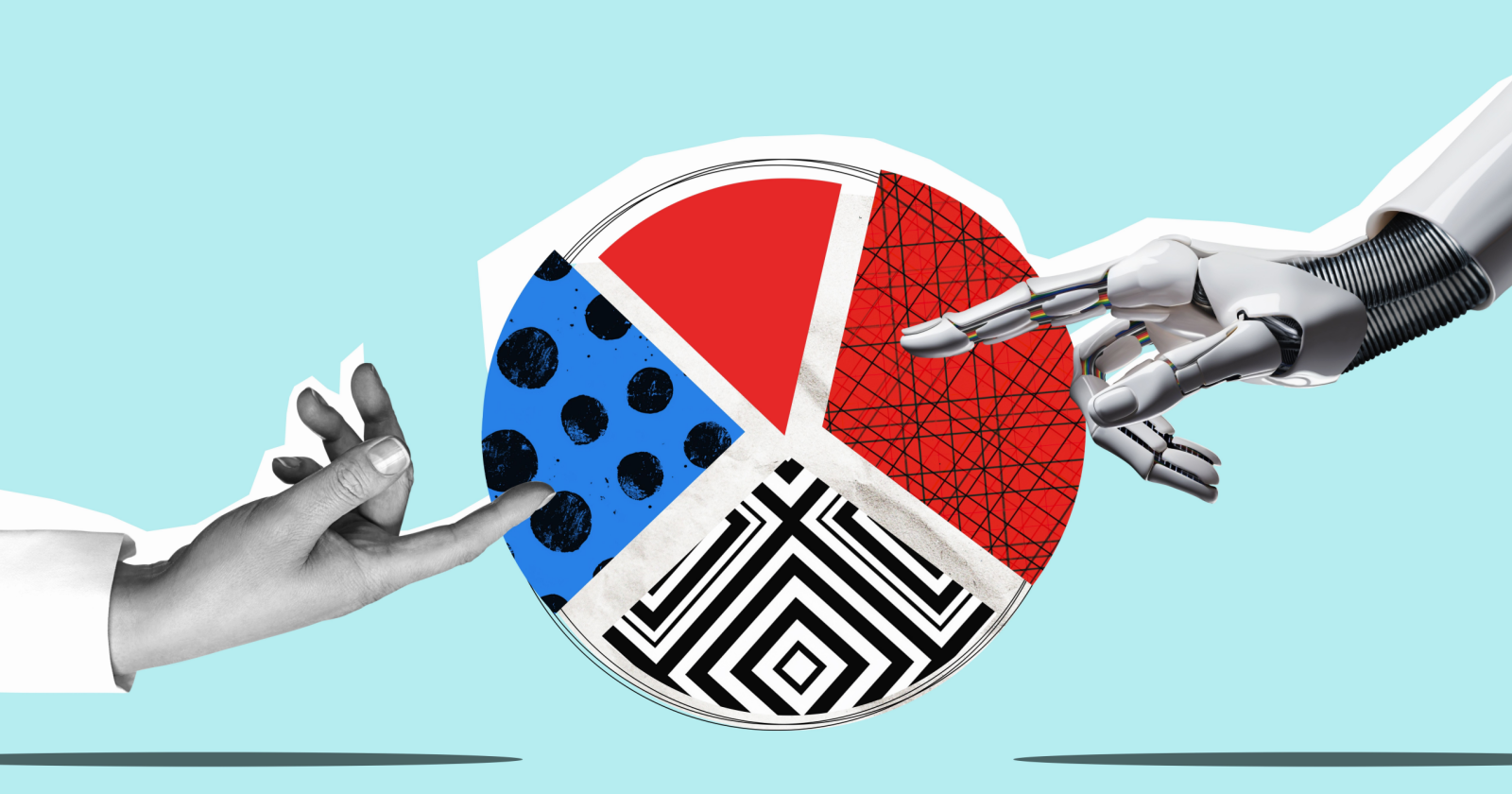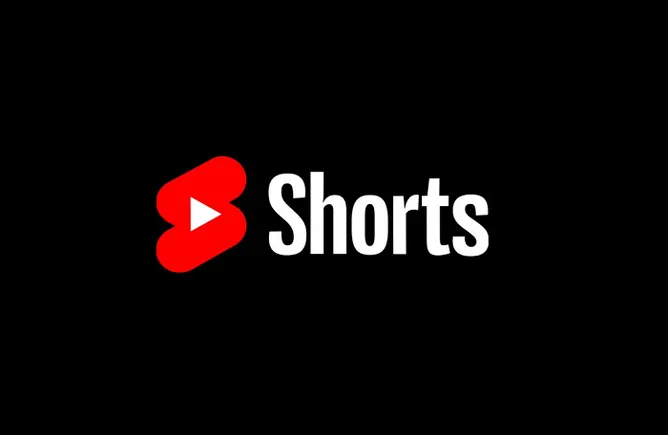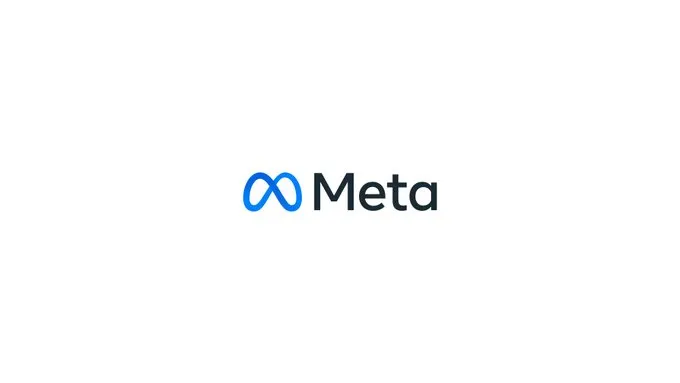The AI Bots That ~140 Million Websites Block the Most
There’s a cost to bots crawling your websites and there’s a social contract between search engines and website owners, where search engines add value by sending referral traffic to websites. This is what keeps most websites from blocking search...
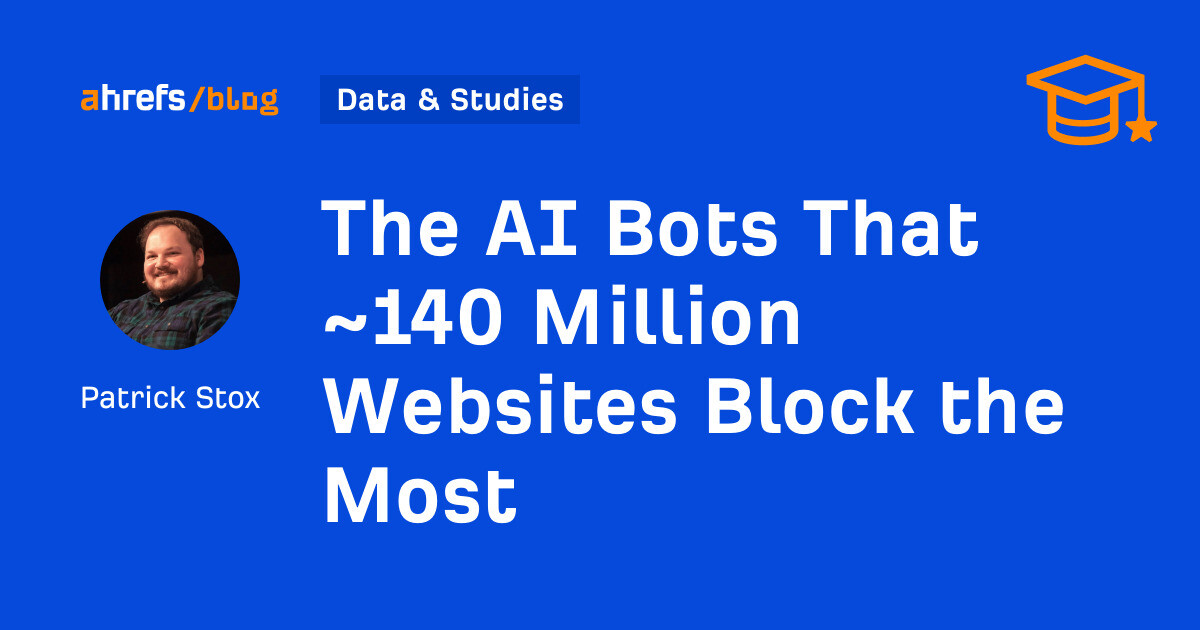
Article Performance
Data from Ahrefs
The number of websites linking to this post.
This post's estimated monthly organic search traffic.
AI bots power some of the most advanced technologies we use today, from search engines to AI assistants. However, their increasing presence has led to a growing number of websites blocking them. There’s a cost to bots crawling your websites and there’s a social contract between search engines and website owners, where search engines add value by sending referral traffic to websites. This is what keeps most websites from blocking search engines like Google, even as Google seems intent on taking more of that traffic for themselves. When we looked at the traffic makeup of ~35K websites in Ahrefs Analytics, we found that AI sends just 0.1% of total referral traffic—far behind that of search. I think many site owners want to let these bots learn about their brand, their business, and their products and offerings. But while many people are betting that these systems are the future, they currently run the risk of not adding enough value for website owners. The first LLM to add more value to users by showing impressions and clicks to website owners will likely have a big advantage. Companies will report on the metrics from that LLM, which will likely increase adoption and prevent more websites from blocking their bot. The bots are using resources, using the data to train their AIs, and creating potential privacy issues. As a result, many websites are choosing to block AI bots. We looked at ~140 million websites and our data shows that block rates for AI bots have increased significantly over the past year. I want to give a huge thanks to our data scientist Xibeijia Guan for pulling this data. We looked at the total number of websites blocking the bots. There are many ways to block bots with robots.txt, and this accounts for all of them including: Caveats: this doesn’t include any other block types such as firewalls or IP blocks. As I mentioned earlier, the most blocked bot is GPTBot. It’s the most active AI bot according to Cloudflare Radar. There is a moderate positive correlation between the request rate and the block rate for these bots. Bots that make more requests tend to be blocked more often. The nerdy numbers are 0.512 Pearson correlation coefficient, p-value of 0.0149, and this is statistically significant at the 5% level. Here’s the data for the overall blocks: Here is the total number of websites blocking AI bots: Here’s the data: It gets a little more complicated. For the above, we looked at the main robots.txt file for a website, but every subdomain can have its own set of instructions. If we look at the ~461M robots.txt in total, then the total block % for GPTBot goes up to 7.3%. More top-trafficked sites began blocking AI bots in 2024, but the trend is decreasing towards the end of the year. It looks like the decrease mostly comes from generic blocks. The trend for AI bots themselves is increasing and I’ll show you that in a minute. Here’s how it breaks down for each individual bot in different categories of websites. I was actually expecting news to be more blocked than other categories because there were a lot of stories about news sites blocking these bots, but arts & entertainment (45% blocked) and law & government (42% blocked) sites blocked them more. The decision to block AI bots varies by industry. There can be a number of unique reasons for this. These are somewhat speculative: For this measure, we’re looking only at cases where a particular bot is disallowed. It does not include any overall disallow statements or cases where only certain bots may be allowed. In these cases, website owners went out of their way to specifically block certain bots. Again, GPTBot is the most targeted, followed closely by Common Crawl’s bot. Common Crawl data is likely used as a data source for most LLMs. Here are the most blocked AI bots with websites specifically targeting them: Here’s the data for the number of websites blocking them: Here’s the data: As you can see, AI bots are starting to be blocked by a lot more of the most trafficked websites. The number of AI bots more than doubled in just over a year, from 10 in August 2023 to 21 in December 2024. More new entrants into the market mean more bots all using resources to crawl websites. Claudebot had the fastest growth of any crawler in the last year. Here’s the data: It will be interesting to see how the block rate evolves as more and more of these crawlers start to use an ever-increasing amount of resources. Will they be able to fulfill that social contract with website owners and send them more traffic, or will they choose to keep that traffic for themselves? I think if they go for the walled garden approach, more sites will end up blocking the bots and these systems will have to pay websites for access to their data, or the bots may end up breaking web standards and ignoring robots.txt blocks. There have been a few reports of some AI bots ignoring robots.txt blocks already, which sets a dangerous precedent. What’s your take? Are you blocking them on your site, or do you see value in allowing them access? Let me know on X or LinkedIn.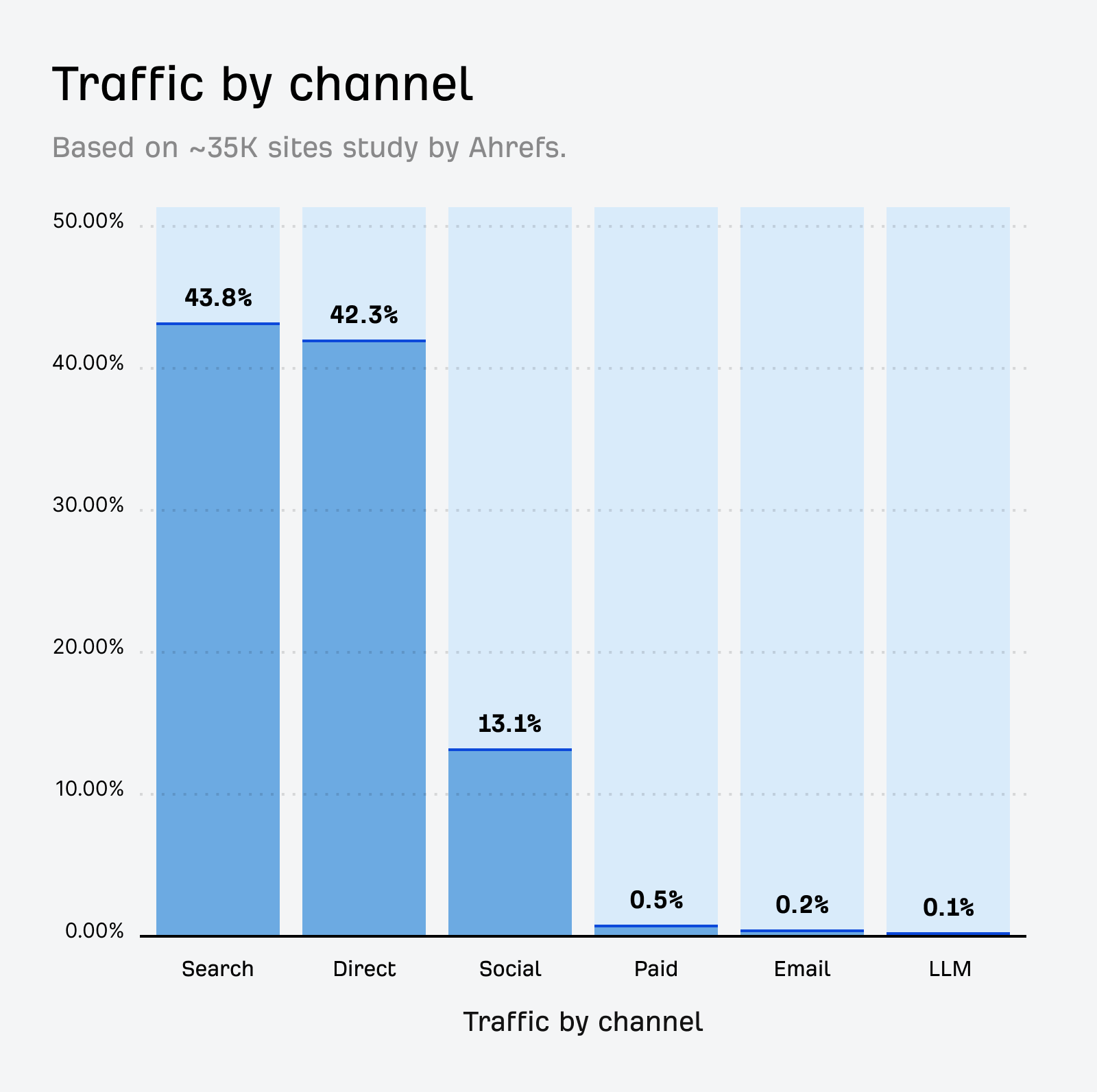
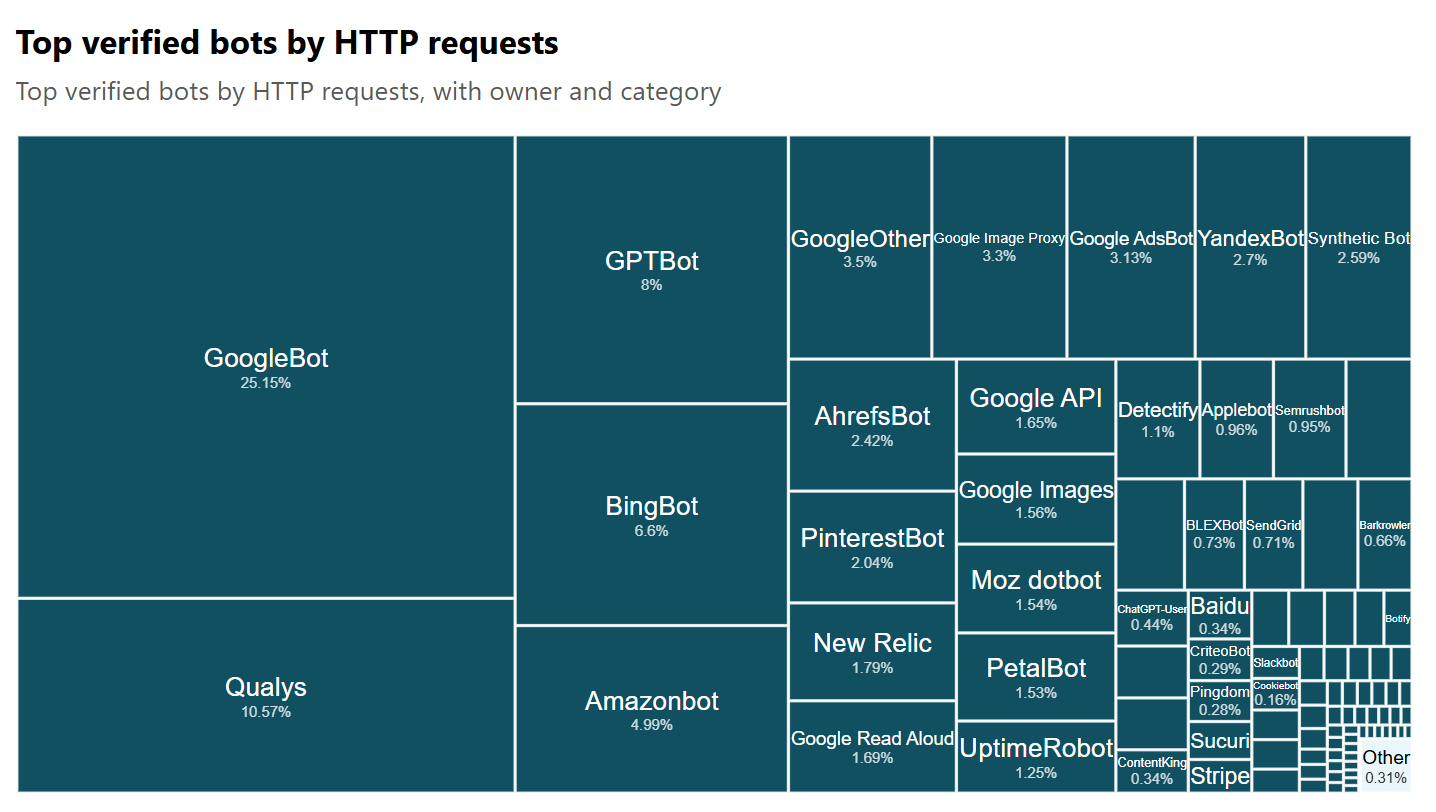
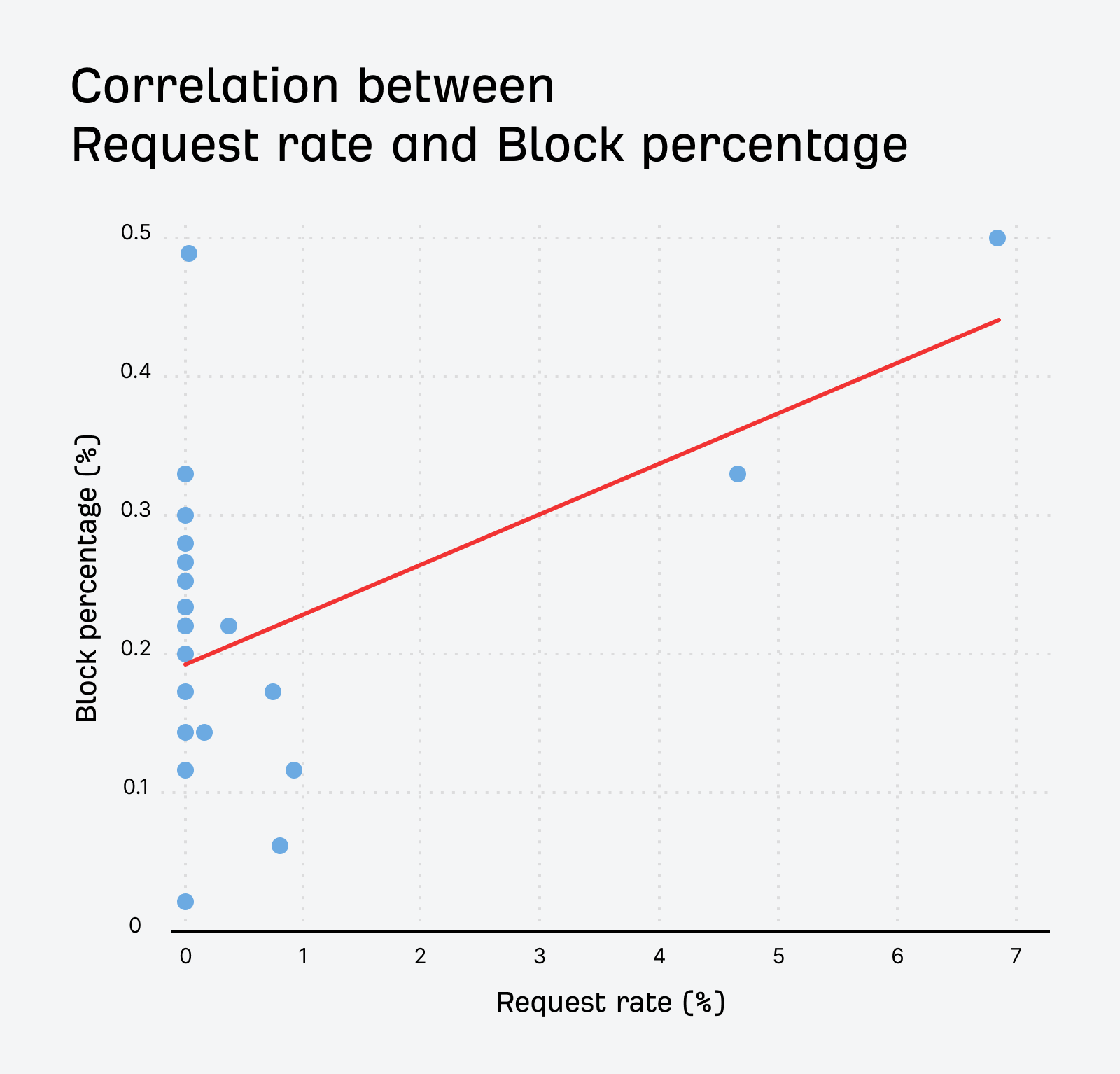
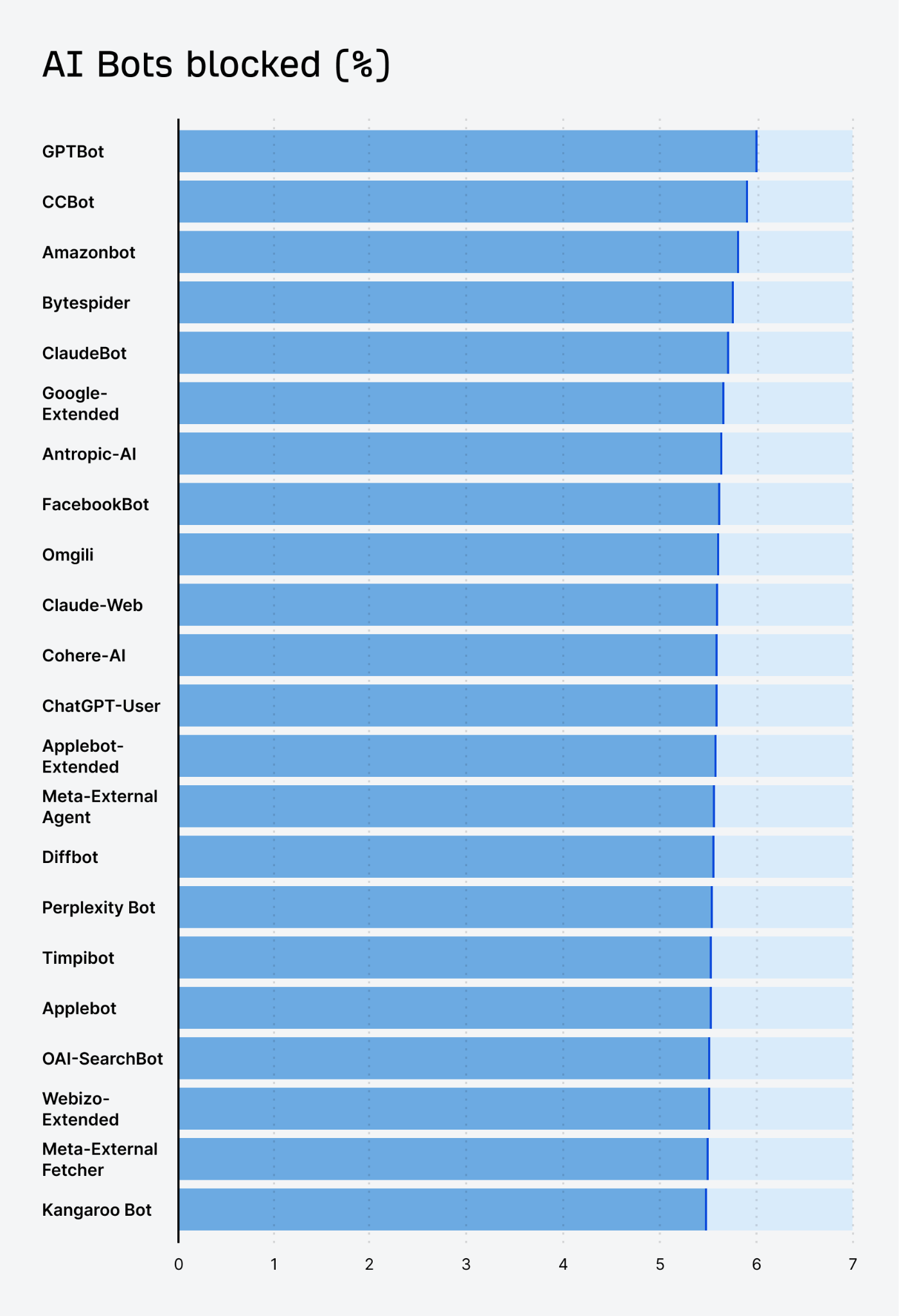
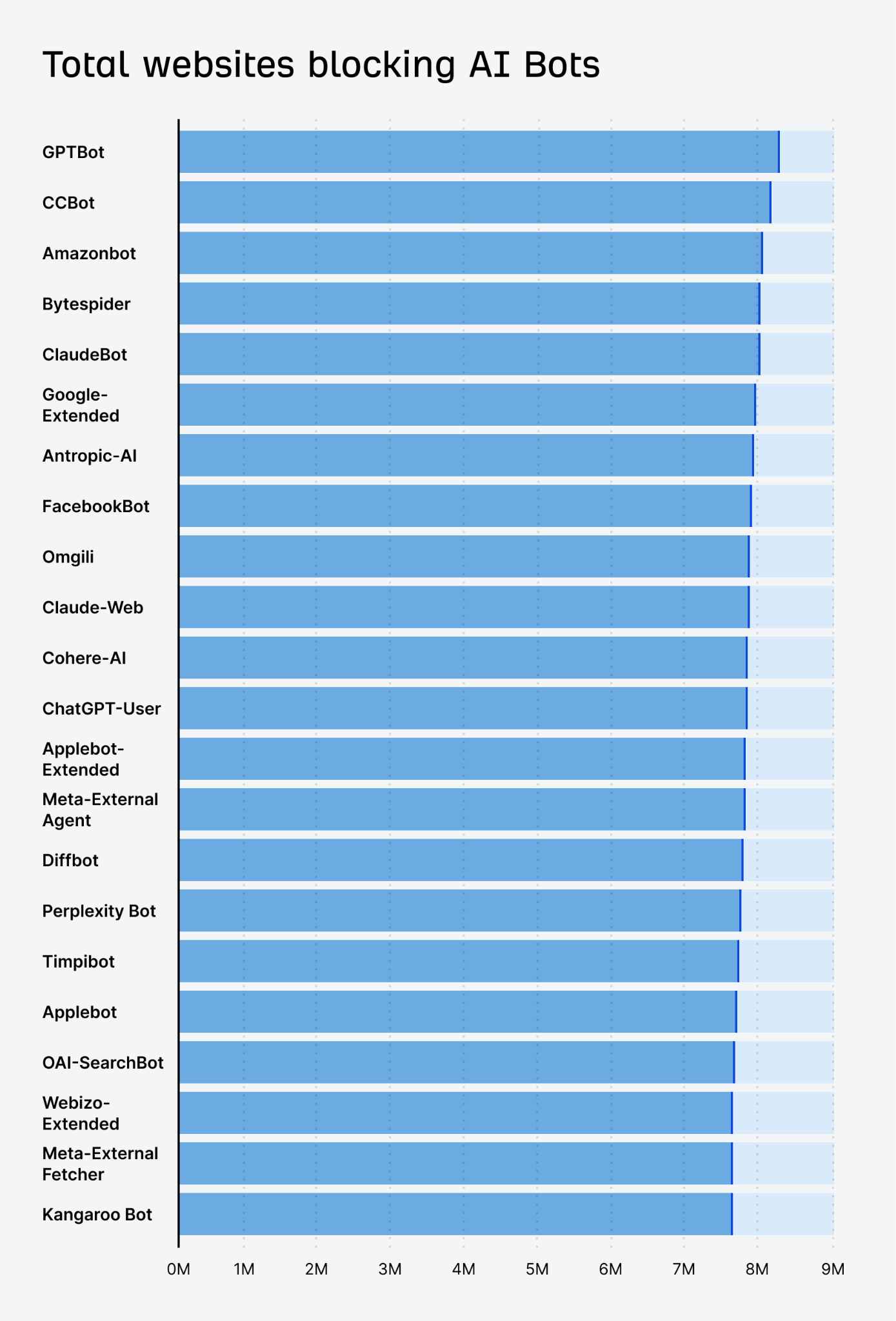
Bot NameCountPercentage %Bot Operator GPTBot 8245987 5.89 OpenAI CCBot 8188656 5.85 Common Crawl Amazonbot 8082636 5.78 Amazon Bytespider 8024980 5.74 ByteDance ClaudeBot 8023055 5.74 Anthropic Google-Extended 7989344 5.71 Google anthropic-ai 7963740 5.69 Anthropic FacebookBot 7931812 5.67 Meta omgili 7911471 5.66 Webz.io Claude-Web 7909953 5.65 Anthropic cohere-ai 7894417 5.64 Cohere ChatGPT-User 7890973 5.64 OpenAI Applebot-Extended 7888105 5.64 Apple Meta-ExternalAgent 7886636 5.64 Meta Diffbot 7855329 5.62 Diffbot PerplexityBot 7844977 5.61 Perplexity Timpibot 7818696 5.59 Timpi Applebot 7768055 5.55 Apple OAI-SearchBot 7753426 5.54 OpenAI Webzio-Extended 7745014 5.54 Webz.io Meta-ExternalFetcher 7744251 5.54 Meta Kangaroo Bot 7739707 5.53 Kangaroo LLM AI bot blocks over time
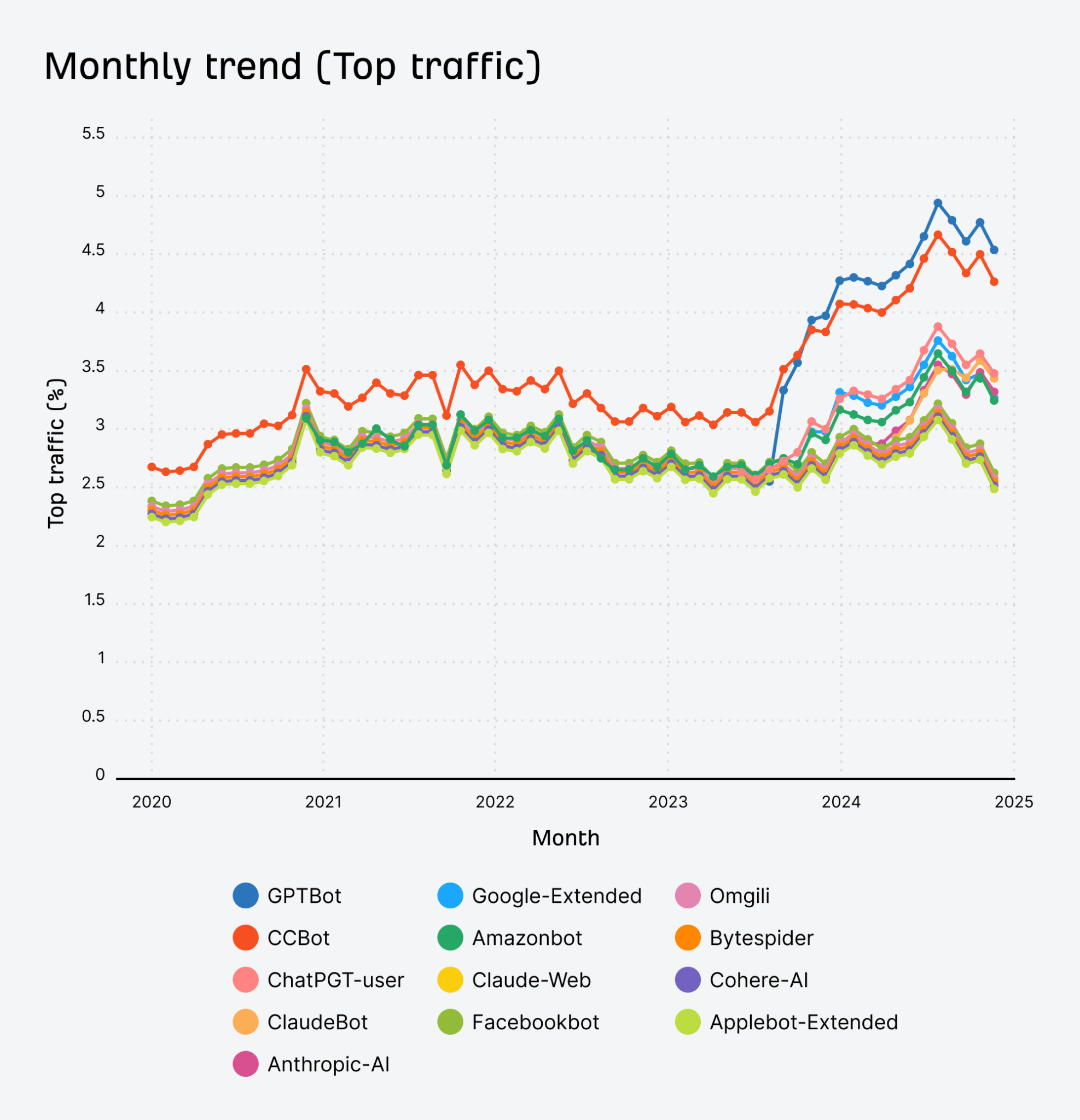
Do certain types of sites block AI bots more?
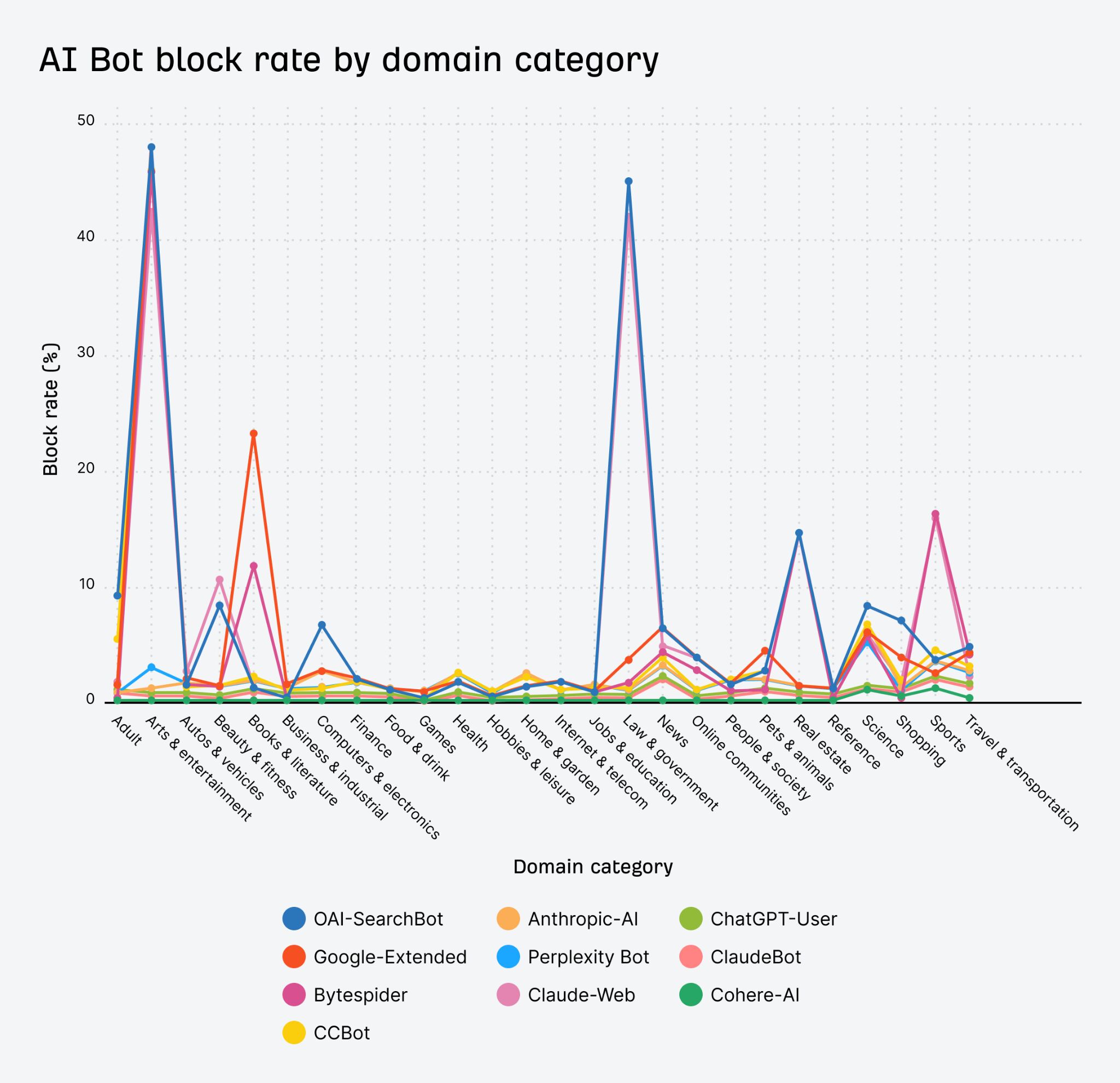
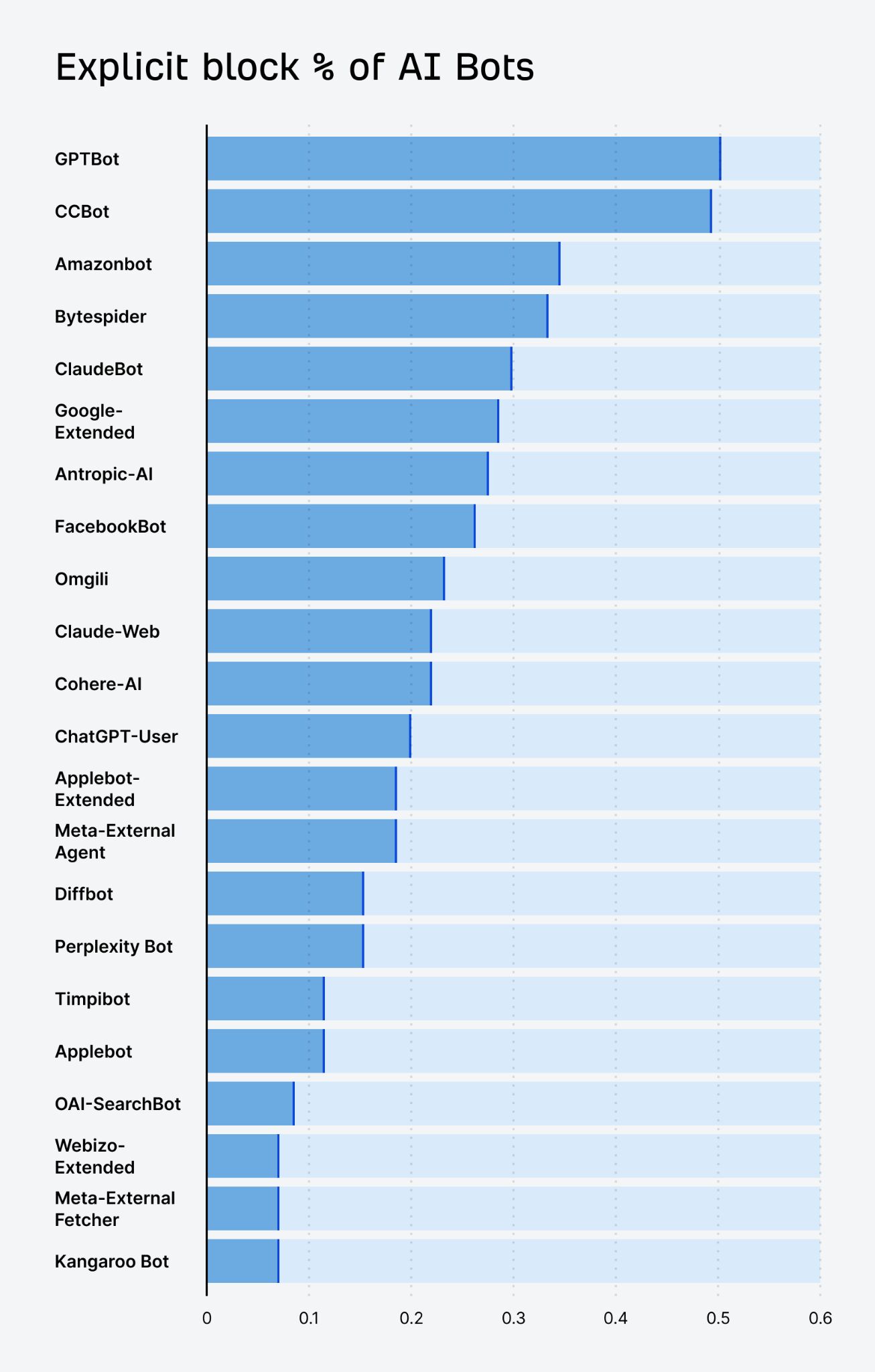
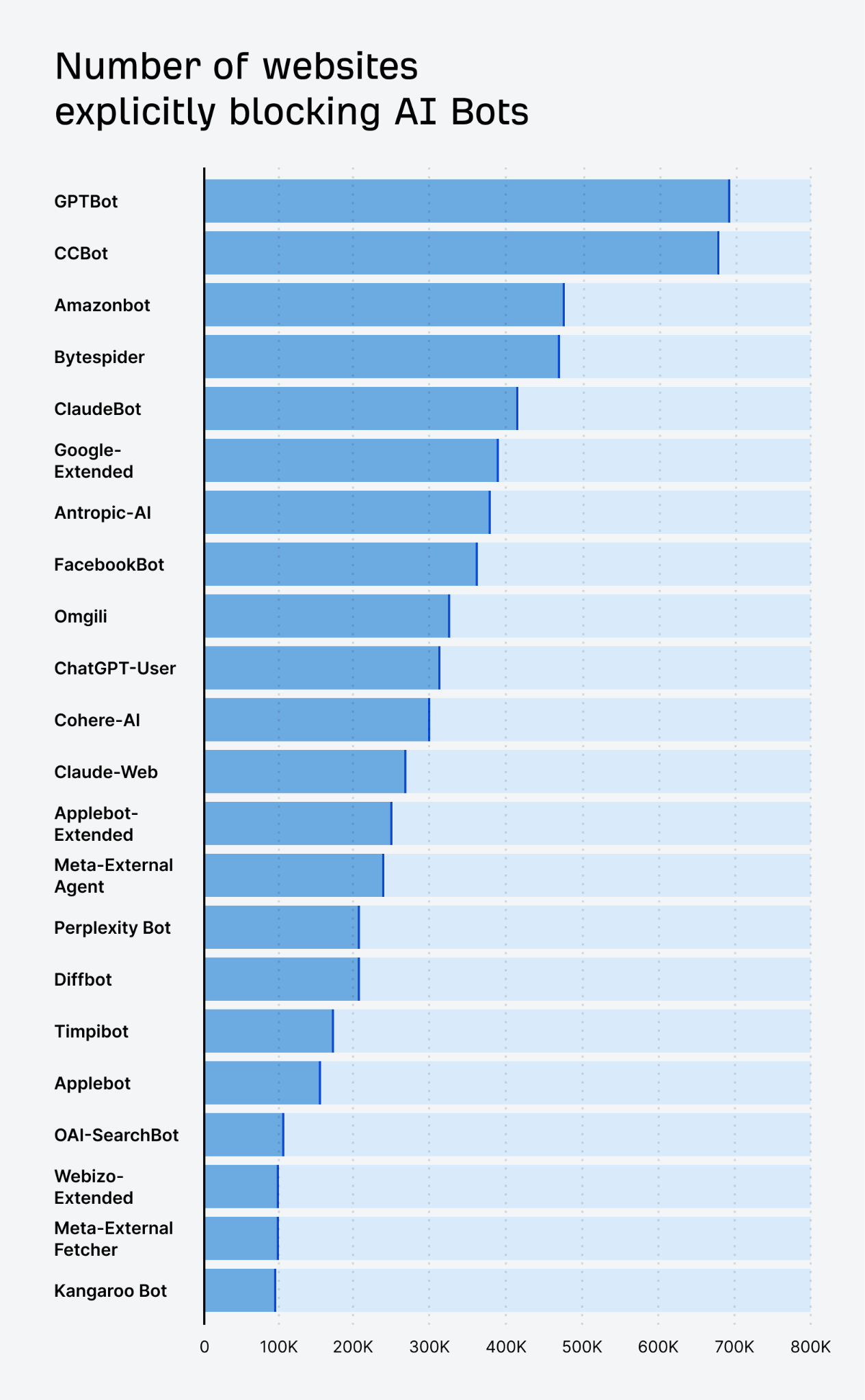
Bot NameCountPercentage %Bot Operator GPTBot 693639 0.5 OpenAI CCBot 682861 0.49 Common Crawl Amazonbot 469086 0.34 Amazon Bytespider 461706 0.33 ByteDance Google-Extended 415821 0.3 Google ClaudeBot 393511 0.28 Anthropic anthropic-ai 383176 0.27 Anthropic FacebookBot 361803 0.26 Meta omgili 322502 0.23 Webz.io ChatGPT-User 310430 0.22 OpenAI cohere-ai 306385 0.22 Cohere Claude-Web 276411 0.2 Anthropic Applebot-Extended 258451 0.18 Apple Meta-ExternalAgent 245176 0.18 Meta PerplexityBot 214488 0.15 Perplexity Diffbot 213828 0.15 Diffbot Timpibot 174434 0.12 Timpi Applebot 163148 0.12 Apple OAI-SearchBot 110376 0.08 OpenAI Webzio-Extended 100572 0.07 Webz.io Meta-ExternalFetcher 99993 0.07 Meta Kangaroo Bot 95056 0.07 Kangaroo LLM Explicit blocks of AI bots over time
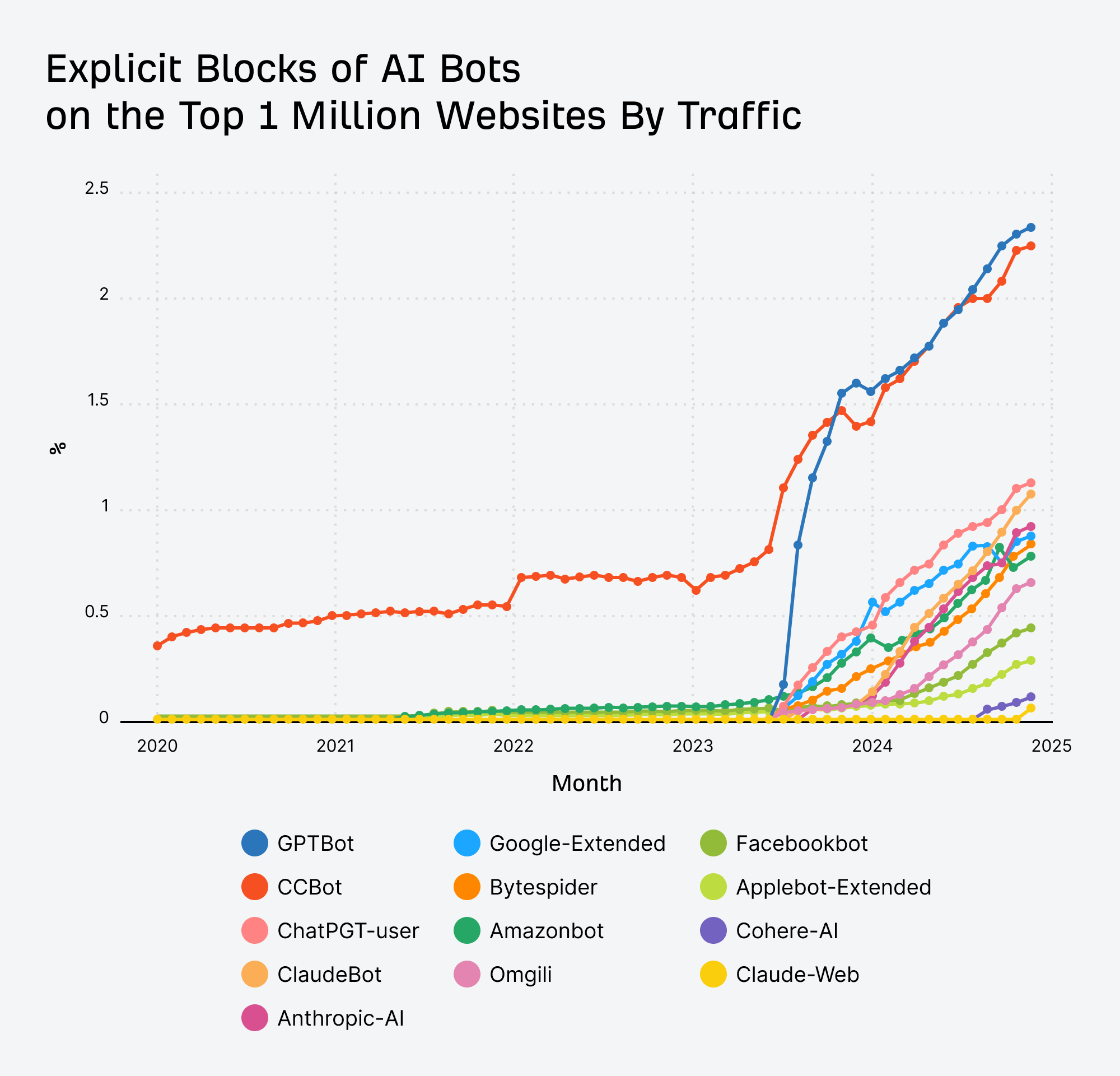
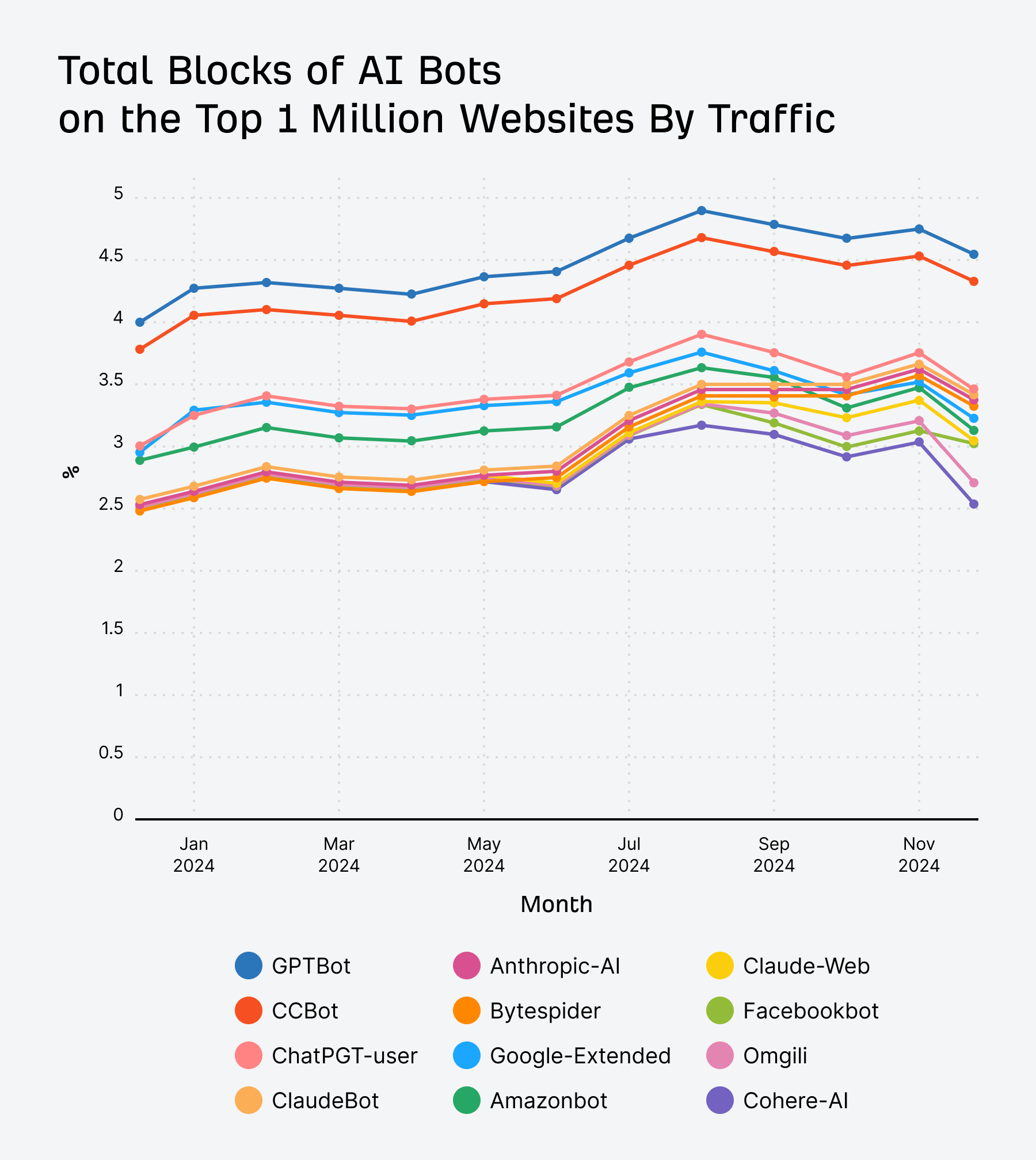
Bot nameGrowth %Absolute growth claudebot 32.67% 0.85 anthropic-ai 25.14% 0.67 claude-web 20.66% 0.54 bytespider 19.57% 0.54 chatgpt-user 15.52% 0.47 perplexitybot 15.37% 0.4 gptbot 13.38% 0.53 cohere-ai 12.45% 0.32 facebookbot 11.71% 0.32 ccbot 11.41% 0.44 amazonbot 10.22% 0.3 google-extended 10.07% 0.3 diffbot 8.98% 0.23 omgili 8.96% 0.25 applebot-extended 7.11% 0.18 meta-externalagent 5.90% 0.15 oai-searchbot 2.17% 0.06 timpibot 0.01% 0 webzio-extended -1.69% -0.04 applebot -3.32% -0.09 meta-externalfetcher -4.32% -0.11 Kangaroo bot -5.89% -0.15 Final thoughts

 JimMin
JimMin 








![Is Your SEO Strategy Built for the AI Era? [Webinar] via @sejournal, @hethr_campbell](https://www.searchenginejournal.com/wp-content/uploads/2025/07/6b-240.png)
